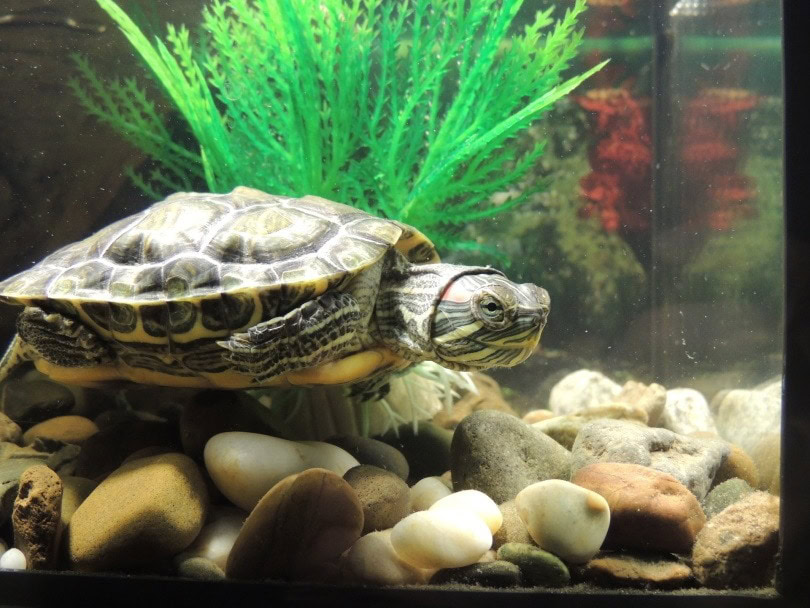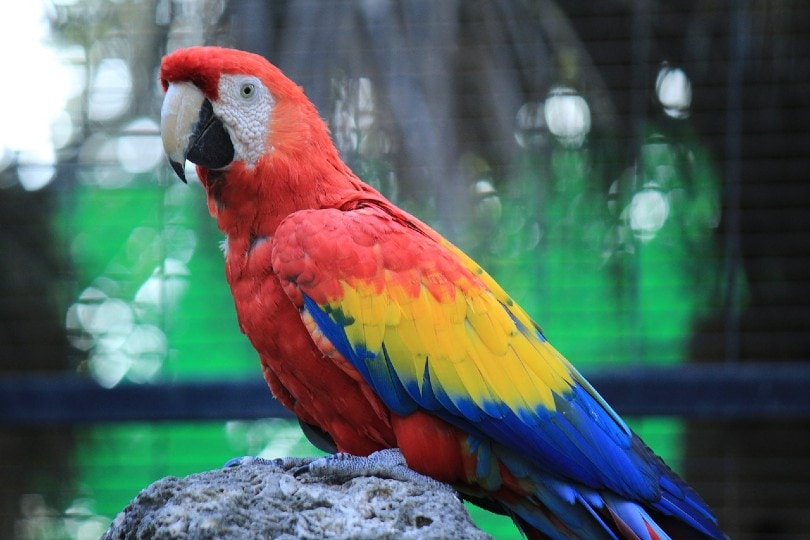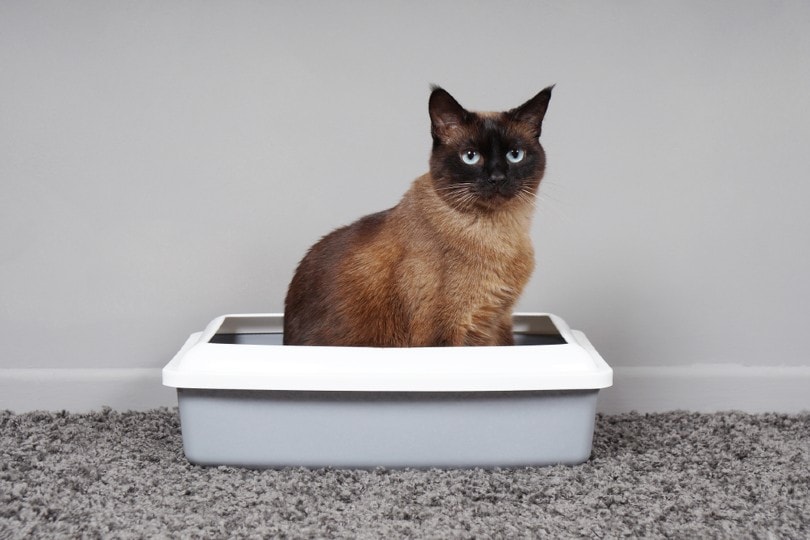Click to Skip Ahead
Setting up a proper habitat for a pet turtle takes planning, time, and money. If you’re in the process of creating the ideal set-up for your pet turtle that includes an aquarium, heating, lighting, and filtration, you’re well on your way to caring for a healthy and happy turtle!
If you’d like to add a few fish to your turtle’s habitat but aren’t sure if pet turtles can live with fish, the answer is yes. Pet turtles can live in harmony with fish, but there are a few exceptions.
There are a few crucial factors you need to think through before you add fish to your turtle’s habitat to ensure the two can live in harmony. They include the compatibility of the species, the aquarium size, the aquarium conditions, and the type of filter system you use.
We’ll closely examine these factors below to help you set up the ideal environment for a pet turtle and a few fish.

The Compatibility of the Species
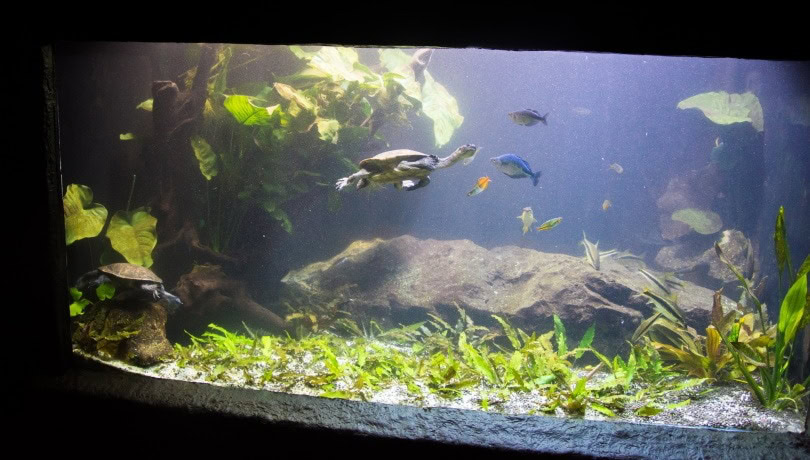
Many species of turtles will chase fish and eat as many as they can capture. If you put some small, slow-swimming fish in with a turtle that sees fish as prey, you can bet the fish won’t last long. That’s why you must carefully choose compatible species.
A good rule of thumb to follow is to choose fish that aren’t too small and a type that’s known to be fast-swimming so they can easily steer clear of the turtle.
It’s always wise to provide fish with hiding spots that protect them from the turtle. These hiding spots include PVC pipes, aquarium decor, dense plants, and other objects that fish can hide in or around.
When you visit a pet store to buy fish for your turtle’s habitat, ignore the goldfish because they won’t survive long with a turtle. Goldfish are large, slow swimmers. Some good fish to keep with turtles include:
- Algae eaters
- Neon tetras
- Peppered corydoras
- Zebra danios
- Golden barbs

The Aquarium Size
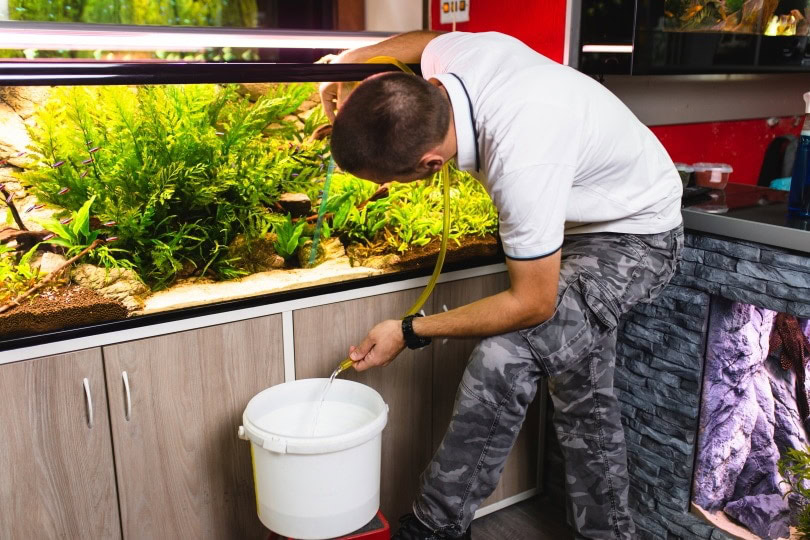
Your aquarium must be big enough for your turtle and fish to coexist happily. An aquarium that’s too small will put a strain on the filter you’re using, which can lead to a bacterial invasion, fungus, and overall poor living conditions.
For example, a 6-inch turtle needs 30 gallons of water. A 6 to 8-inch species needs 55 gallons, and a turtle larger than 8 inches needs at least 75 gallons of water. A few fish can live harmoniously with a turtle if you follow the guidelines above. When we say a few, we mean less than 10 fish, not a whole school.
Your turtle will become stressed and overwhelmed if a school of fish suddenly surrounds them. The water must be deep enough for the turtle and fish to swim freely. The water should be twice as deep as the length of the turtle. For example, a 6-inch-long painted turtle needs a water depth of 12 inches.
Don’t forget that a painted turtle also needs land to rest on. Be sure there’s plenty of dry land in your aquarium to accommodate your turtle when it wants to leave the water and bask under the light.
The Aquarium Conditions
Your aquarium must provide a suitable environment for your pet turtle and fish, including the correct temperature of the water and the pH level. If you provide your turtle and fish with water that’s 76°F with a pH level of 7.5, both species should be very happy.
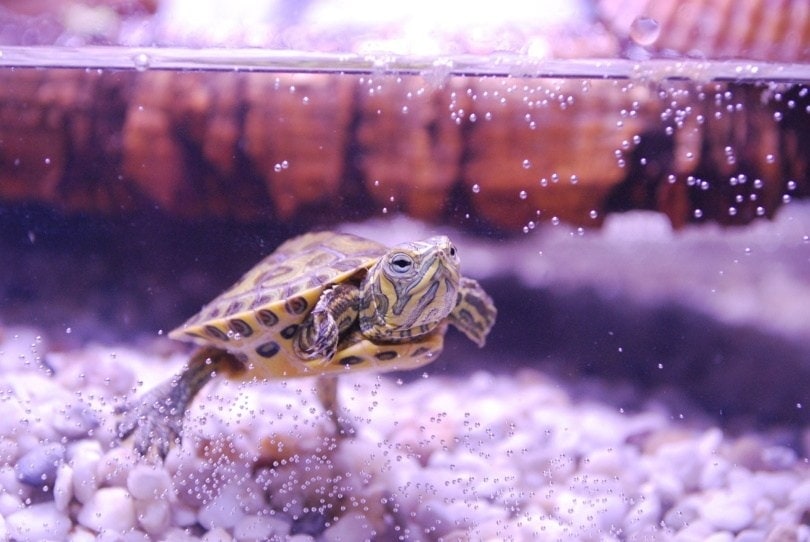
The Filter System
When your turtle cohabitates with fish, both species will produce waste in the water. This means you have to have a more powerful filtration system than a standard submersible filter that most turtle owners use.
The best choice for a large aquarium housing a turtle and a few fish is a canister filter mounted outside the aquarium. This external filter won’t take up any space inside the habitat, which is great for your turtle and the fish! A canister filter cleans the water in stages and does an excellent job of filtering away waste.

Types of Turtles That Can Live With Fish
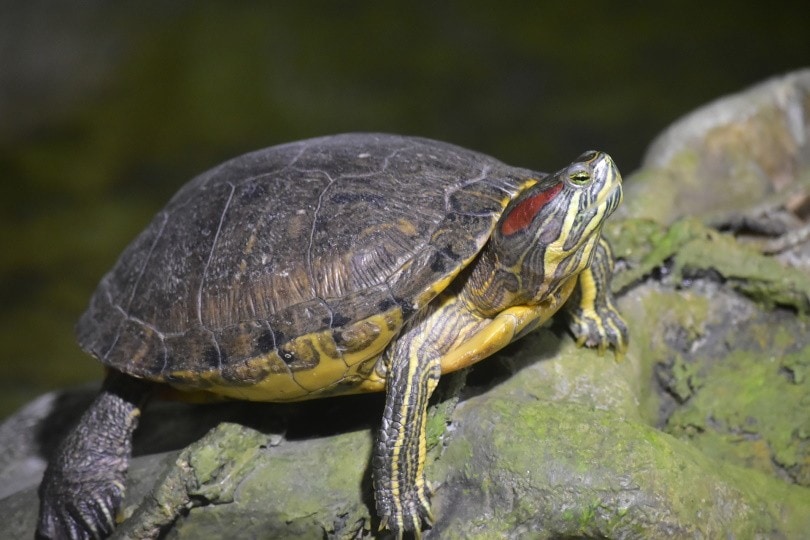
Some turtles should never inhabit aquariums with fish, such as snapping turtles and map turtles. They are highly carnivorous turtles that will actively hunt and feed on fish.
Several species of turtles can live with fish, including the red-eared slider, which is a commonly kept pet turtle. Other species that can coexist with fish include the painted turtle, the mud turtle, and the musk turtle.

Conclusion
As discussed above, make sure you buy fast-swimming fish that aren’t too small. Don’t forget to provide the fish with hiding places to keep them safe from the turtle. If you get everything right, your pet turtle won’t eat your fish, and you can enjoy keeping both species as pets!
Featured Image Credit: Sergey_m, Pixabay
